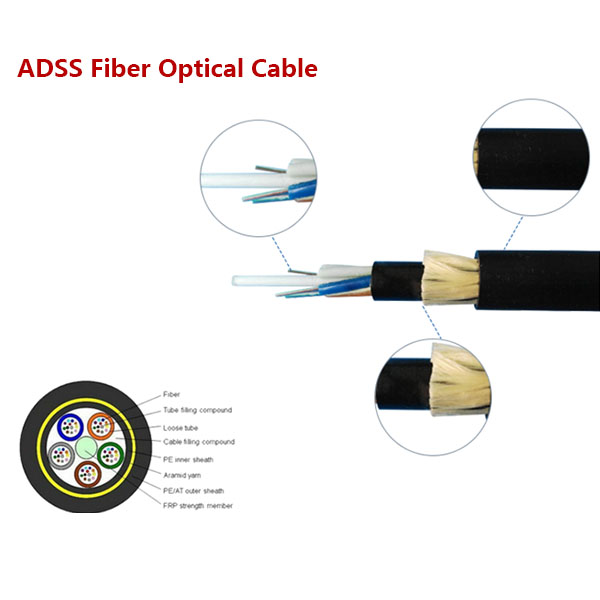1. The core logic of core number selection
The number of optical fibers must match the network capacity requirements and scalability:
· Low core count (6-24 cores): Suitable for small networks (such as rural broadband, industrial monitoring), low cost and easy to install.
· Medium core count (36-48 cores): Suitable for regional telecommunications networks or smart grids, balancing capacity and cost.
· High core count (96-144 cores): Used in backbone networks or high-density scenarios (such as 5G base station backhaul), requiring enhanced tensile and protection design.
· Ultra-high core count (288 cores): Aiming at future ultra-large-scale infrastructure (such as megacity smart grids), supporting long spans and fast splicing.
2. Technical specifications and scenario adaptation
1. Low core count (6-24 cores)
·Typical applications:
·6-12 cores: rural communications, distributed sensor networks.
·24 cores: traffic signal systems, enterprise redundant links.
·Technical features:
·Structure: 1+6 design (1 FRP reinforcement core + 2 loose tubes), light weight, small outer diameter (about 12mm.
·Protection: PE sheath (≤110kV line) or AT sheath (>110kV line), resistant to electrical corrosion.
·Span: 50-700 meters, suitable for existing tower loads.
|
|
2. Number of cores (36-48 cores)
·Typical applications:
·36 cores: regional smart grid, suburban FTTH.
·48 cores: urban 5G fronthaul, high-density campus network.
·Technical features:
·Structure: Layer twisted design, filled with water-blocking grease, waterproof performance reaches IEC 60794-1 standard 1.
·Mechanical strength: tensile strength reaches 13.2kN (48 cores), span can reach 800 meters.
·Environmental adaptability: working temperature -45°C~+70°C, ice thickness ≤10mm.
3. High core count (96-144 cores)
·Typical applications:
·96 cores: long-distance communication trunk lines, data center interconnection.
·144 cores: national broadband projects, critical facility redundancy.
·Technical features:
·High-density design: using ribbon optical fiber, outer diameter ≤14.6mm, weight ≤560kg/km.
·Tensile performance: aramid yarn cross-sectional area up to 32.2mm², breaking strength 60kN, span over 1000 meters.
·Weather resistance: AT sheath is UV-resistant, and its tracking resistance has passed the IEEE 1222 test.
4. Ultra-high core count (288 cores)
·Typical applications: cross-continental backbone networks and smart grids in megacities.
·Technical features:
·Structural optimization: Trapezoidal loose tube design, supports fast welding, attenuation ≤0.22dB/km (1550nm).
·Extreme environment adaptation: Optional LSZH sheath (low smoke zero halogen), suitable for tunnels or subways.
·Span limit: Reinforced aramid layer, span up to 1800 meters, wind load resistance 35m/s.
3. Key factors for selection
1. Bandwidth requirements: Low core counts meet the current needs, while high core counts reserve space for expansion.
2.Span and tension: For spans > 1000 meters, the cross-sectional area of aramid needs to be increased to ensure that MAT (maximum allowable tension) is ≥ 60% RTS.
3. Environmental risks: AT sheaths are preferred in coastal/industrial areas; all-medium design is required for lightning protection in areas with frequent lightning strikes.
4. Cost control: 288 cores have a high unit price and are suitable for long-term planning; 24 cores or less are suitable for short-term projects.
4. Industry Trends
Regional demand:
·Europe and the United States: Focus on 48-144 cores (smart grid upgrade).
·Asia and Africa: 24-96 cores dominate (rural electrification and 4G/5G expansion).
Conclusion
The selection of the number of cores for ADSS optical cables needs to balance capacity, environment and cost. Low core counts are lightweight, high core counts are highly extensible, and 288 cores represent the technical ceiling. By matching IEEE/IEC standards (such as IEEE 1222, IEC 60794-1), ADSS optical cables will continue to enable the efficient integration of power and communication networks.
Post time: 2025-03-07 23:44:44

